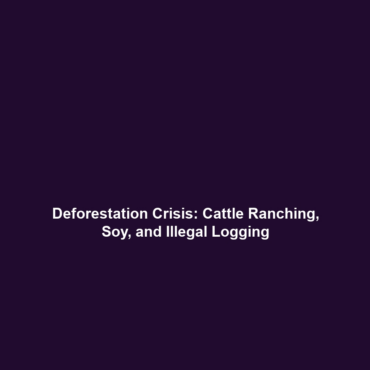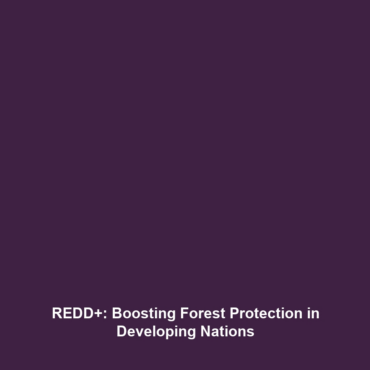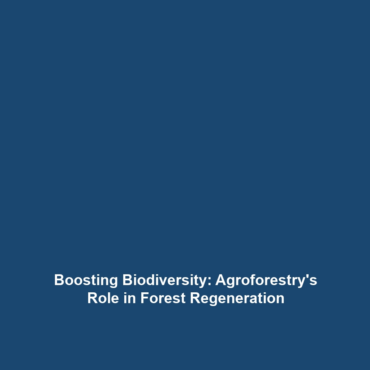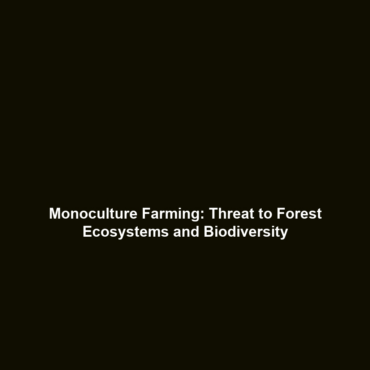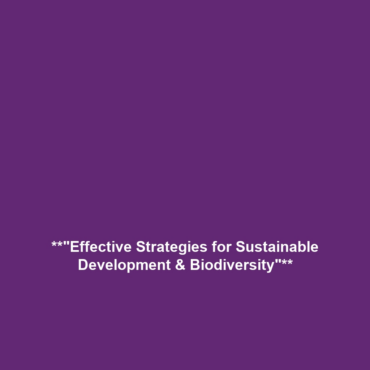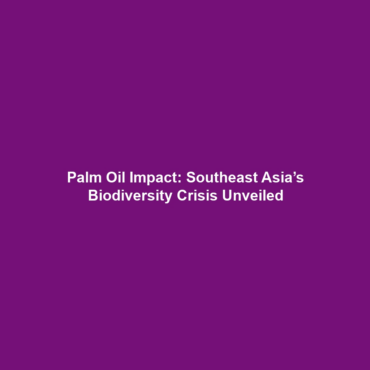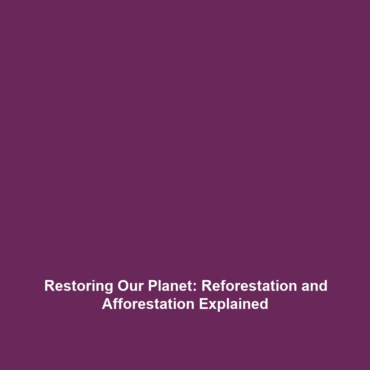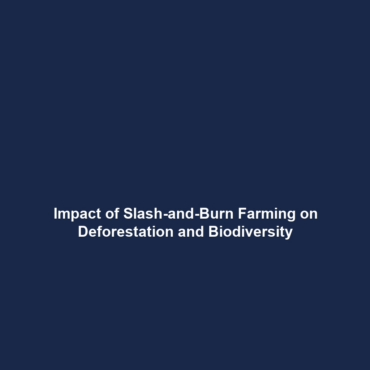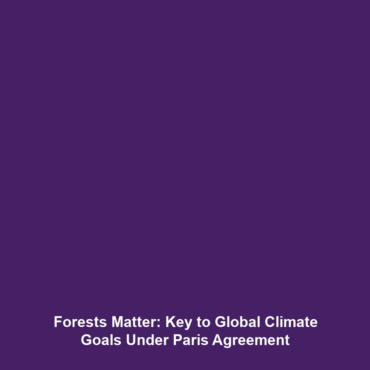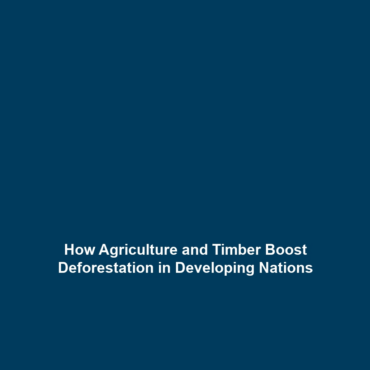The Scale of Deforestation in the Amazon: Cattle Ranching, Soy Farming, and Illegal Logging
Introduction
Deforestation in the Amazon rainforest has reached alarming levels, primarily driven by cattle ranching, soy farming, and illegal logging. The Amazon, often referred to as the “lungs of the planet,” plays a crucial role in global biodiversity and climate regulation. The significant loss of trees not only exacerbates climate change but also threatens the vast array of species that call this ecosystem home. Understanding the scale of deforestation caused by these industries is vital in the broader context of Deforestation & Biodiversity Loss.
Key Concepts
Cattle Ranching
Cattle ranching is one of the leading causes of deforestation in the Amazon. Vast areas of forest are cleared to create pastureland for cattle, contributing significantly to carbon emissions and habitat destruction. It underscores how agricultural practices, particularly in developing regions, drive biodiversity loss.
Soy Farming
Soybean cultivation has surged in demand, primarily for animal feed and biofuels. This crop’s expansion leads to increased deforestation as forests give way to agricultural land, further impacting the delicate balance of the Amazon’s ecosystem.
Illegal Logging
Illegal logging operations contribute significantly to the degradation of the Amazon forest. Trees are harvested unsustainably and often without regard for environmental regulations, compounding the threats to biodiversity and the habitat loss incurred by legal logging practices.
Applications and Real-World Uses
The complexities surrounding deforestation in the Amazon have multiple real-world applications, particularly in environmental conservation strategies. Understanding how cattle ranching, soy farming, and illegal logging impact biodiversity drives policies aimed at sustainable land use. Some applications include:
- Developing sustainable farming practices to reduce land clearance.
- Implementing conservation policies to protect untouched forest areas.
- Investing in eco-friendly agricultural alternatives to minimize ecological footprints.
Current Challenges
Tackling the issues of deforestation in the Amazon is fraught with challenges, including:
- Political and economic pressures favoring agriculture over conservation.
- Lack of enforcement of environmental laws against illegal logging.
- Insufficient funding for research and conservation efforts.
- Challenges in tracking and monitoring deforestation activities accurately.
Future Research and Innovations
Research into sustainable practices and restoration technologies is crucial for addressing deforestation. Innovations such as satellite monitoring and drone technology are being used to track illegal activities and assess forest health. Future studies aim to develop:
- Advanced agroforestry methods to integrate agriculture and conservation.
- Biotechnological solutions to enhance crop yield on existing agricultural lands.
- Policies that incentivize sustainable land management to protect biodiversity.
Conclusion
The scale of deforestation in the Amazon due to cattle ranching, soy farming, and illegal logging presents significant challenges to biodiversity and ecological health. Addressing these issues requires a multifaceted approach, incorporating sustainable agricultural practices, effective policy implementation, and technology-driven monitoring. Individuals and organizations must unite to advocate for conservation efforts to preserve this vital ecosystem. For more information on sustainable farming practices and biodiversity conservation, check out our related articles.
